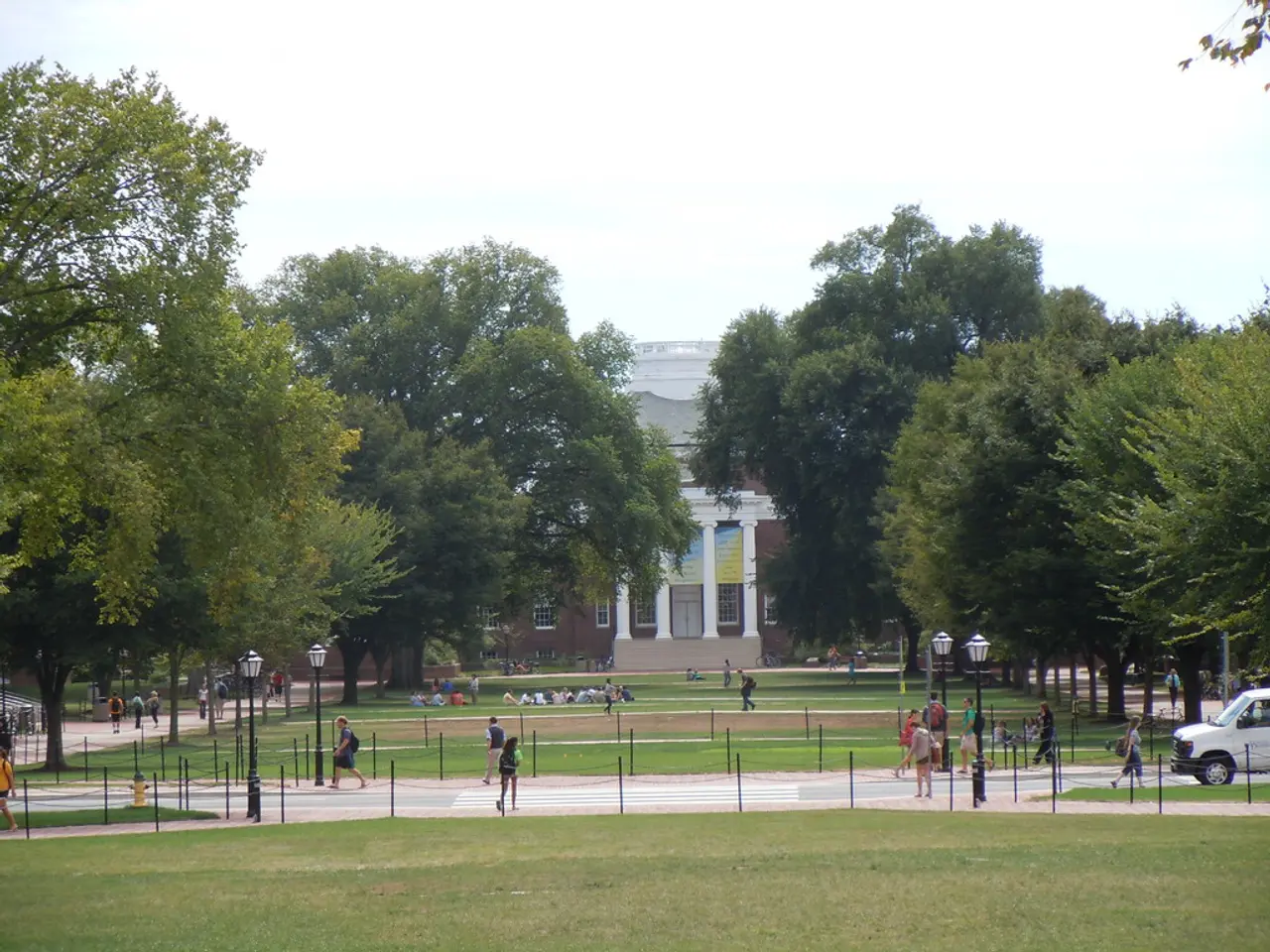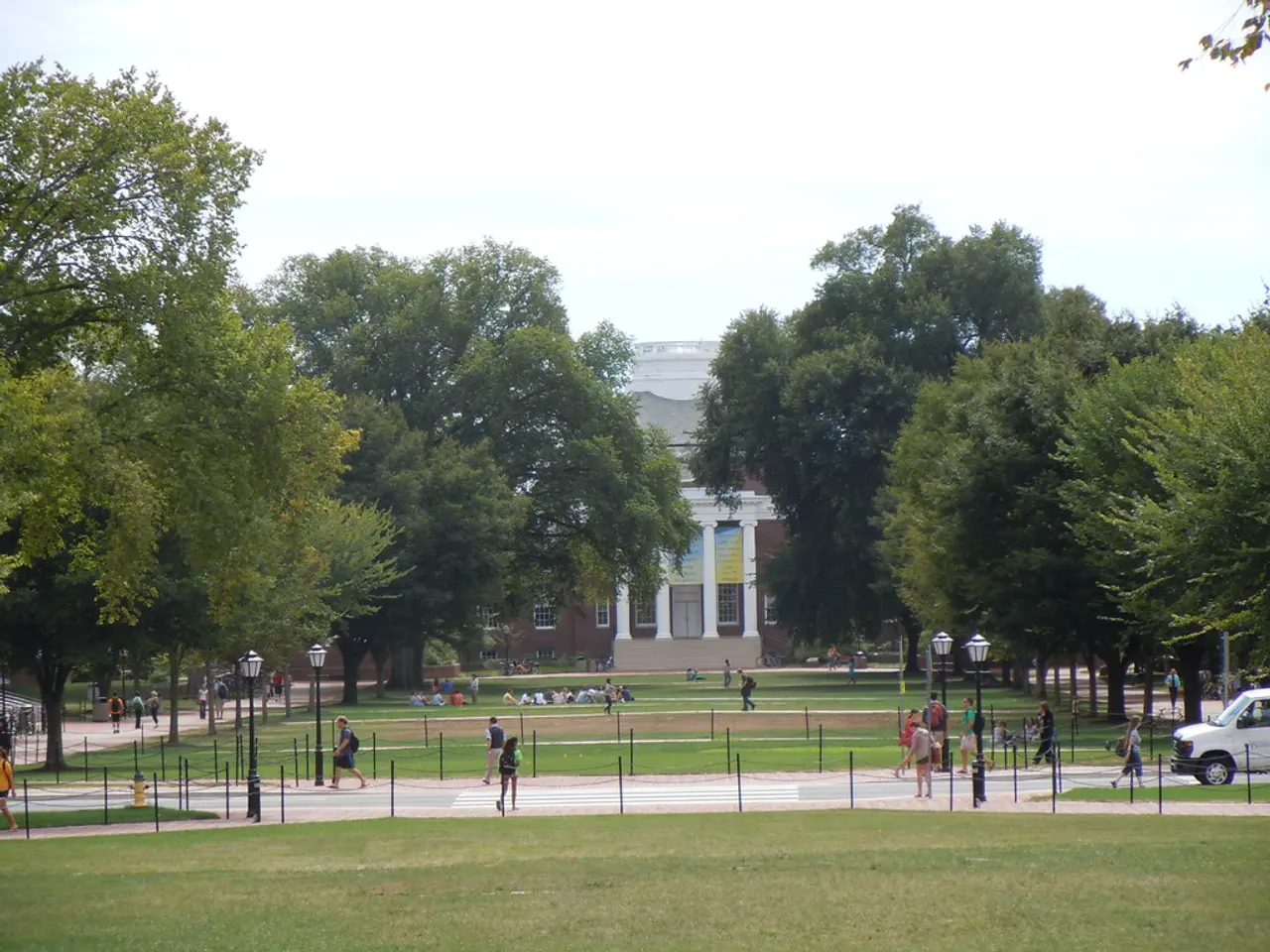Shrinking academic options make it difficult for rural students to be taken seriously by colleges, lamenting the decline in available majors.
In rural America, universities are scaling back more than 40 programs, including earth sciences, geography, and environmental resources, as they grapple with plummeting enrollment and financial crises.
At the University of North Carolina Greensboro, more than half the students are low-income and 35 percent are Black. Yet, Azariah Journey, a second-year graduate student in history, expressed concern about the future of opportunities at the institution.
Similarly, at Delta State University, student Dominick Bellipanni received a scholarship that he might not have gotten if his only options to study piano had been at the state's larger, more competitive universities. However, Delta State University eliminated 20 degree programs, including digital media arts.
Universities in rural areas are not alone in these cuts. Youngstown State University in Ohio has eliminated more than 25 programs, many of them in the humanities. St. Cloud State University is cutting 42 degree programs, including criminal justice, gerontology, history, electrical and environmental engineering, economics, and physics.
The State University of New York at Fredonia is dropping 13 majors. These large-scale cuts during and since the Covid-19 pandemic have been disproportionately happening at universities that serve rural students or are in largely rural states.
Rural-serving institutions are disproportionately eliminating degree programs largely due to significant funding cuts, especially in tribal colleges and rural-serving colleges. These cuts threaten their operational capacity and financial viability.
Severe federal funding reductions, such as the nearly 90% federal funding slash to tribal colleges, gravely undermine these institutions’ ability to offer programs, maintain faculty, and keep classrooms open. Tribal colleges stress that funding cuts violate treaty responsibilities and impair their capacity to educate students who often serve as a critical workforce in rural areas.
Economic consequences are also significant. For example, Aaniiih Nakoda College in Montana contributes roughly $12.2 million annually to its local economy and supports about 1 in 14 local jobs through student and institutional activity. Loss of programs jeopardizes this economic impact.
Reduced workforce development is another concern. Rural institutions often focus on training professions critical to local needs—such as educators, nurses, and other community-serving roles. Program cuts limit the pipeline for these essential workers and weaken local economies and services.
Beyond direct funding, rural areas often lack alternative resources such as philanthropic support, have smaller local tax bases, and fewer supplementary pathways for youth development.
These actions undercut rural students' educational opportunities and the broader rural workforce and economic vitality. Rural students face decreased access to education and degree programs tailored to rural economies and cultures, especially in tribal communities. This can lead to reduced opportunities for local workforce entry, potentially causing a brain drain as students may move elsewhere for education or jobs.
Moreover, the threat to community sustainability and economic health is significant since rural-serving colleges play an outsized role in both. Many rural students face the question of whether to stay or leave their institutions due to program eliminations, as there are few other places to go.
Rural Americans have less access to higher education compared to their counterparts in cities and suburbs. Approximately 13 million people live in "higher education deserts," mostly in the Midwest and Great Plains, where the nearest university is beyond a reasonable commute away.
Many rural private institutions are also axing majors, including Wittenberg University in Ohio, Saint Mary's University in Minnesota, Keystone College in Pennsylvania, Warren Wilson College in North Carolina, Bethany Lutheran College in Minnesota, Baldwin Wallace University in Ohio, Illinois Wesleyan University, University of Evansville in Indiana, and Northland College in Wisconsin (which cut its number of majors from 24 to eight).
Holly Buroughs, a physics major, started a petition protesting the cuts at the University of North Carolina Greensboro. Andrew Koricich, a professor of higher education at Appalachian State University, stated that if a rural institution eliminates a program, it may not be offered elsewhere.
These program eliminations in rural areas echo the phrase "used to be, used to be, used to be" in rural communities. People in these communities are hearing about the closure of their institutions and the loss of opportunities, reflecting on what once was.
In summary, rural-serving institutions face disproportionate program eliminations primarily because of drastic federal funding cuts combined with existing structural challenges in rural economies. These actions undercut rural students' educational opportunities and the broader rural workforce and economic vitality.
[1] https://www.insidehighered.com/news/2021/04/28/rural-colleges-face-unique-challenges-amid-pandemic [2] https://www.insidehighered.com/news/2021/03/03/rural-colleges-struggle-with-enrollment-crisis-amid-pandemic [3] https://www.insidehighered.com/news/2021/04/28/rural-colleges-face-unique-challenges-amid-pandemic [4] https://www.insidehighered.com/news/2021/03/03/rural-colleges-struggle-with-enrollment-crisis-amid-pandemic
- The elimination of education programs in rural institutions, such as the University of North Carolina Greensboro and Delta State University, poses a threat to innovation, particularly in fields like digital media arts and environmental resources.
- Inequality in education-and-self-development opportunities is growing, as rural students face decreased access to higher education, due to factors including significant federal funding cuts and the lack of alternative resources in their communities.
- The absence of general-news coverage on the disproportionate cuts in rural education could lead to a lack of public awareness about the impact on rural economies, workforce development, and community sustainability.




